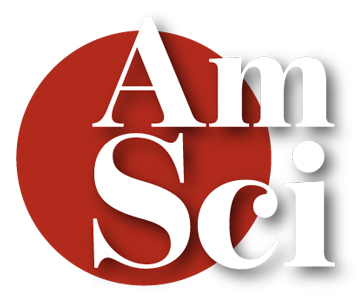Magazine
July-August 2002

July-August 2002
Volume: 90 Number: 4
Atomic structures have been determined for many of the most important molecules in living cells. The machinery of protein synthesis has been revealed with the determination of the structures of the ribosome (red), transfer RNA (yellow) and most of the protein factors and enzymes involved (orange). Structures are also available for the 10 enzymes responsible for glycolysis (green). Still, many problems await solution; for instance only the general shape is known for the knobby intermediate filment running along the left. The longest filaments spanning the drawing (blue) make the up the cytoskeleton. In "Protein Structures: From Famine to Feast," Helen M. Berman, David S. Goodsell and Philip E. Bourne explore the history of protein structure determination and the increasingly comprehensive understanding of the structures that make up cells. (Drawn by David S. Goodsell.)
In This Issue
- Art
- Astronomy
- Biology
- Chemistry
- Communications
- Computer
- Economics
- Engineering
- Environment
- Ethics
- Evolution
- Mathematics
- Medicine
- Physics
- Policy
- Psychology
- Sociology
- Technology
Cluster Dynamics: Fast Reactions and Coulomb Explosion
Lutz Poth, Eric Wisniewski
Chemistry
The femtochemistry of these unusual aggregates reveals much about the fleeting instant between reactant and product
The Evolutionary Ecology of Escherichia coli
Valeria Souza, Amanda Castillo, Luis Eguiarte
Biology Evolution
Abundantly studied and much feared, E. coli has more genomic plasticity than once believed and may have followed various routes to become a pathogen
Greek Astronomy and the Medieval Arabic Tradition
George Saliba
Anthropology Astronomy
The medieval Islamic astronomers were not merely translators. They may also have played a key role in the Copernican revolution
Serendipitous Radiation Monitors
Robert Fleischer
Medicine Physics Technology
Past radiation doses can be measured by studying the tracks that speeding particles have left in ordinary solids—detectors that just happened to be there
